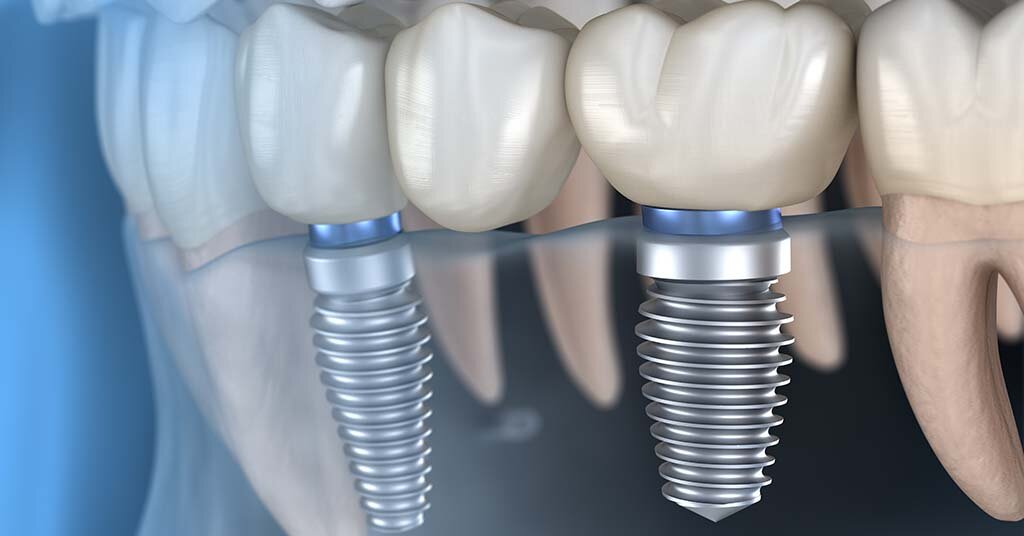What is the best option for a single tooth replacement?
When you select the right tooth replacement for a single missing tooth, you should consider a number of factors. The appearance of the implant is important, but structural stability and functionality of the replacement tooth is also important. Patients should consider the benefits of dental implants, which are the only structurally complete tooth replacement and come with number of advantages.
Dental implants are made of biocompatible titanium. Therefore, after an oral surgeon places a dental implant in the patient’s jaw, the surrounding bone forms a strong bond with the implant’s surface. When this procedure is complete, the dental implant is rendered a fixture in the patient’s jaw.
Dental implants replace the missing tooth’s root. The root structure of a tooth performs a number of important functions such as securing the jawbone and helps to absorb some of the forces needed to chew different types of foods, like fruits and vegetables.
When you have a dentist or oral surgeon place a dental implant to replace a single missing tooth, you gain a number of advantages over a conventional tooth replacement, such as a fixed dental bridge.
Another appealing characteristic of dental implants for a tooth replacement is their ability to stand independently without support from surrounding teeth. The process of getting a fixed dental bridge involves the removal of healthy enamel in order to place crowns on the abutment teeth. That aspect of treatment may weaken the teeth. Dental implants, in contrast, have no impact on the surrounding teeth.
Single dental implants procedure
- Initial Consultation: During the initial consultation, the dentist or oral surgeon will examine your teeth and gums to determine if your jawbone is prepared to receive the single tooth implant. Dental implants need a sufficient jaw bone structure to allow the dental implant. If you don’t have sufficient bone structure, the dentist may recommend a bone graft before the dental implants.
- Dental Implant Placement: The dental implants dentist will cut into your gum tissues and drill a hole into your jawbone to attach a titanium post, which will serve as the tooth’s root. The crown won’t be attached for another 3 to 6 months, which is the amount of time necessary for your jawbone to heal and grow around the titanium post.
- Abutment Placement: The dentist will attach the abutment to the titanium post after your jawbone heals and secures the post.
- dental crown Placement: Finally, the dentist will take impressions of your teeth and send an order to a dental lab for a dental crown. Once the dental crown returns, the dentist will attach it over the titanium post. The dental crown is made of porcelain-fused-to-metal because porcelain resembled enamel in color and texture.
A single tooth implant is the one of the most requested dental procedures when replacing a single missing tooth. Dental implants leave patients with a full access to the gum line for oral hygiene practices such as flossing. You can floss a single dental implant just like you do with the rest of your teeth.
Do you need a tooth replacement to replace a single missing tooth? You should thoroughly explore all of your treatment options, including dental implants. Contact our team at Stonelodge Dental, our team of highly trained and dedicated professionals can help guide you towards the best solution for your missing tooth.
Dr. Prida is committed to helping you and your family maintain excellent oral health for life. If you are missing a tooth or teeth and would like more information about your options, schedule an appointment online call 214-613-1500 today.

